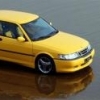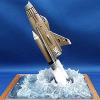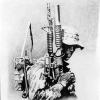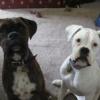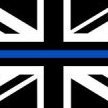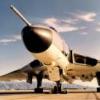Search the Community
Showing results for tags 'Spitfire'.
-
Hi folks,just started Airfix,s Spitfire PR Mkxix ,and looking on the web have seen the BoB memorial flights example with invasion stripes and would love to finish it as that example,I can rustle up the fin flash and roundels out of spares and as no serials seem to be worn be able to do it,was there aircraft finished in an authentic scheme with the stripes and no codes? thanks Steve
-
Just seen this, sure looks pretty http://globalaviationresource.com/v2/2013/12/17/news-spitfire-mkxviii-sm845-flies/ Chris
-
As per title, my first model in over twenty years. I've been lurking on here for a while and after taking 12 months to complete this thought I'd share it as many of you on here have been an inspiration. Overall, I'm pretty pleased, Would like to add a little more detail with each build (Airfix Tiffy next). Wash on the bottom went well, pleased with the paintjob considering I only have two brushes. Disappointed to see the photography shows some mistakes I didn't spot before (paint creep on canopy and paint not getting into some of the details). Also the canopy masking lifted as I was spraying a matt coat slightly fogging the left side of the canopy. Oh, and I found the photography hard. Be kind! Chomping at the bit to start the Tiffy
-
Just got this finished following a slight disaster involving enamel varnish... Spitfire XIV NH915 Flt Lt D Rake May 1945 1/72 Fujimi Spitfire XIV NH915 by Ben Standen, on Flickr IMG_6359_zpsd0b7b1ef by Ben Standen, on Flickr IMG_6358_zpsb870be11 by Ben Standen, on Flickr IMG_6357_zps7d536d16 by Ben Standen, on Flickr Quite an easy build IMO. I added the cockpit from Airfix's F22, scratched some cockpit detailing and seat belts and used Falcons vac form canopy. Comments and criticism welcome Ben.
- 11 replies
-
- 10
-

-
While taking a break from decaling my Javelin, I found time to complete a couple of Airfix 1/72 Spitfires that have been sitting around for over 12 months without any work on them. Both finished straight out of the box, brush painted with Tamiya acrylics. First, the Spitfire IXc finished in Desert Air Force colours; Then the Spitfire F22 finished as a competitor in the Cooper Trophy air race of 1948: And together: Thanks for looking.
- 21 replies
-
- 10
-

-
Rotol Equipment for Spitfire Mk VII, VIII and IX plus (X, XI & XVI) Aircraft Pictured above as photographed by Royal Air Force (RAF), Official Photographer, Flying Officer (F/O) L H Baker is an unidentified 241 Squadron (Sqn), RAF Merlin 63 powered Spitfire FIX (probably MH653, RZ-U*), being serviced by Aircraftman (AC1) Jim Birkett of B Flight and Leading Aircraftman (LAC) Wally Passmore of Maintenance Flight at Canne, Vesuvius, Italy during 27 January 1944. It Appears to be fitted with an R.3/4F5/4 type propeller featuring Hydulignum blades with Rotoloid coverings and an Armoured sheath (secured by screws and rivets) with a 4CM/4 Rotol type spinner and GRF/4A governor unit. The following information drawn mostly from the 1950 "Publication No 504, Series 01, Repair & Service Manual, Rotol Equipment for Spitfire Mk VII, VIII & IX" details the various types of propellers and spinners that were fitted to Spitfire Mk VII, VIII, IX & XVI aircraft. Of particular interest to the aviation artist, modeller and or kit maker is a list that describes various propeller and spinner assemblies with their respective aircraft and engine combinations. Information on paint finishes and identification markings are also revealed, as is more importantly the use of both the Rotol Limited and Constant Speed Airscrews (CSA) Limited spinners. The before mentioned spinner types account for previously observed differences such as length between some surviving Merlin 60 series family powered Spitfire spinners. Please note that all of the text in green as shown below is quoted verbatim from the above mentioned Rotol Limited Repair & Service Manual. Rotol Equipment List Publication No 504 Series 01 Reference 7124 ROTOL EQUIPMENT FOR SPITFIRE MK VII, VIII & IX AIRCRAFT LIST OF EQUIPMENT The items of Rotol equipment used on the various Marks of Spit- fire aircraft are shown in tabular form below. Spitfire Mk. VII, VIII & IX. Merlin 61 engine PROPELLER SPINNER GOVERNOR UNIT R.3/4F5/2 4CM/2 GRF/4A R.3/4F5/3 4CM/2 GRF/4A R.3/4F5/4 4CM/4 GRF/4A Merlin 64 engine PROPELLER SPINNER GOVERNOR UNIT R.3/4F5/4 4CM/4 GRF/4A Spitfire L.F. Mk. VIII & IX. Merlin 66 engine PROPELLER SPINNER GOVERNOR UNIT R.3/4F5/4 4CM/4 CGR/1A x x For details of the CGR/1A Governor Unit apply to Rotol Limited. Propeller Descriptions PART 2 02 Sect: 1 Description Chap: 1 Detailed Description Appendix R3/4F5/2 PROPELLER R3/4F5/2 This propeller is similar to that described in the preceding Chapter The table below supplies additional particulars. Pitch range 35° Number of blades 4 Diameter 10’ 9” Rotation R.H. Weight 383 lb. approx. Pin setting angle 48° 30’ Fine pitch angle 31° ± 5’ Balancing angle 50° 00’ Assembly diagram RA.11401-2 Installation diagram RA.11400-6 BEARING. Taper roller. BLADE. Material Covering Sheath Diagram. Dural – – RA.4014 Sheets 1 & 2 NOTE. A limited number only of these propellers have been manufactured. Fur [sic] further details of this type apply to Rotol Limited. PART 2 02 Sect: 1 Description Chap: 1 Detailed Description Appendix R.3/4F5/3 PROPELLER R.3/4F5/3. This propeller is similar to that described in the preceding Chapter The table below supplies additional particulars. Pitch range 35° Number of blades 4 Diameter 10’ 9” Rotation R.H. Weight 393 lb. approx. Pin setting angle 47° 30’ Fine pitch angle 30° ± 5’ Balancing angle 50° 00’ Assembly diagram RA.11401-3 Installation diagram RA.11400-3 BEARING. Taper roller. BLADE. Material Covering Sheath Diagram. Dural – – RA.10061 Sheets 1 & 2 NOTE. A limited number only of these propellers have been manufactured. For further details of this type apply to Rotol Limited. PART 2 02 Sect: 1 Description Chap: 1 Detailed Description Appendix R5/4F5/4 PROPELLER R5/4F5/4 This propeller is similar to that described in the preceding Chapter. The table below supplies additional particulars :– Pitch range 35° Number of blades 4 Diameter 10’ 9” Rotation R.H. Weight 283 lb. Pin setting angle 46° 50’ Fine pitch angle 29° 20’ ± 5’ Balancing angle 50° 00’ Assembly diagram RA.11401-4 Installation diagram RA.11400-5 BEARING. Taper roller. BLADE. Material Covering Sheath Diagram. Hydulignum Rotoloid Brass RA.10046 HRS or Sheets 1 & 2 Jablo PART 2 02 Sect: 1 Description Chap: 1 Detailed Description Appendix R.12/4F5/4 PROPELLER R.12/4F5/4. This propeller is similar to that described in the preceding Chapter. The table below supplies additional details. Pitch range 35° Number of blades 4 Diameter 10’ 9” Rotation R.H. Weight 283 lb. Pin setting angle 39° 50’ Fine pitch angle 22° 20’ ± 5’ Balancing angle 45° 00’ Assembly diagram RA.11401-4 Installation diagram RA.11400-7 BEARING. Taper roller. BLADE. Material Covering Sheath Diagram. Hydulignum Rotoloid Brass RA.10046 HRS or (Sheets 1 & 2) Jablo Spinner Notes Rotol and Constant Speed Airscrews spinner types, please note this image cannot be trusted as a source of accurate dimensional information since it is sourced from a reduced JPG image file of a scanned photocopy of a photocopy of a .......... Part 3 04 Sect: 1 Description CHAPTER – 1. DETAILED DESCRIPTION. (Rotol and C.S.A. type Spinners) GENERAL. 1. The spinner fitted on any Rotol propeller may be in one of two main groups . These are the C.S.A. group of spinners and the Rotol group, the names in each case denoting the manufacturer. 2. The C.S.A. spinner consists generally of a two-piece shell shaped to fit over the blade roots, and attached to a circular back plate mounted on the rear of the propeller hub. It is held on to a back plate secured to the rear of the hub shell by a series of locking nipples which engage corresponding pear-shaped slots in a moveable lock ring. A special key inserted through a slot in the spinner shell moves the lock ring and allows the nipples to engage or disengage the pear-shaped slots, thus permitting the shell to be locked in position or removed from the back plate. 3. The Rotol spinner, while consisting basically of assemblies similar to the C.S.A. type, depends upon an entirely different arrangement for locking the shell to the back plate. In this case a series of forwardly projecting pegs are cush mounted on the back plate and locate in housings fitted to the rear of the spinner shell. A special locking device, accessible through a small hole in the Shell, enables each peg to be locked in its housing, thus securing the shell to the back plate. 4. The two basic groups of spinner noted above are commonly known as "rear drive" types, the locking device in each case being located on the back plate at the rear of the hub. A second distinct type known as the "front drive" spinner is in existence for both main groups, in which the locking device, or driving pegs, are located on a driving plate or ring attached to the front of the hub. Part 3 04 Sect: 1 Description Chap: 1 Detailed Description Appendix 4CM/2 SPINNER TYPE 4CM/2 This spinner is similar to the Rotol spinner type 4CM/- described in the preceding Chapter. Additional information is detailed below. Weight...............................................22 lbs. General Arrangement........................RA.7641. Part 3 04 Sect: 1 Description Chap: 1 Detailed Description Appendix 4CM/4 SPINNER TYPE 4CM/4 This spinner is similar to the Rotol spinner type 4CM/- described in the preceding Chapter. Additional information is detailed below. Weight...............................................24.3/4 lbs. General Arrangement........................RA.7899. Fitting the spinner shell. 29. With Rotol type spinners, one lock on the spinner shell is marked with red paint and must align with a similarly marked pin on the backplate. Locking is effected by turning the “D’ shaped locking pegs with a screwdriver Through 180 deg, to the “LOCKED” position marked on the spinner shell. 30. With C.S.A. type spinners, the words “TO LOCK”, painted on the spinner shell, must align with the key slot in the backplate by inserting the special key (no other implement should be used) and moving it in the direction shown by the arrow. Wood Blade Description The various wooden blades that were manufactured for the Merlin 60 series family powered Spitfire propellers were divided into hard and soft wood varieties. With the Rotol Jablo Wood Blade and Hydulignum Wood Blade types being hard wood versions. While the Weybridge Blade type was a soft wood version. These blades featured either Acetate, Cristofin, Jablo, Rayoid, Rotoloid, Schwarz or Venus protective coverings. It should also be noted that many albeit not all of these blades featured either a a "Simple" or "Armoured" Leading Edge Sheath. The "Simple" sheath was made from non-ferrous metal while the "Armoured" sheath was made from ferrous metal. Part 6 01 Sect: 1 Description Chap: 1 Detailed Description 8. HARD WOOD BLADE. (i) Jablo Wood Blade. This blade is shaped from a block- consisting of a number of compressed wood boards, see Fig.1. Each board is composed of a pack of veneers of Canadian Birch which have been interleaved with thin resin-impreg- nated paper and subjected, during processing, to a com- bination of pressure and heat. The pack of veneers is thus compressed into a homogeneous board about two-thirds the thickness of the original pack. Towards the root end of each board the density is increased by the incorp- oration of extra veneers of graduated length. The com- pressed boards are cemented together to form the block from which the blade is shaped. The root end of the blade is threaded to screw into the steel adapter, and the remainder of the blade is protected with Jablo covering or Rotoloid. The leading edge of the blade may be protected by a metal sheath. (ii) Hydulignum Wood Blade. The block from which this type blade is shaped consists of a number of compressed boards produced from Canadian Birch veneers, see Fig.2. Each veneer is coated with a pigmented thermoplastic resin and the required number assembled into a pack. The pack is then heated and compressed, so producing a board of constant density. A second heating and pressing operation is carried out to obtain the higher density required at the root end. Top and bottom pressure is re-imposed and at the same time the board is subjected, at one end, to a graduated side pressure which reduces its width and corrugates the veneers; thus imparting greater shear strength as well as increasing density. The pro- cessed boards are then cemented to form a block from which the blade is shaped. The root end is threaded to screw into the steel adapter, and the blade protected with Cristofin or Rotoloid covering. The leading edge may be protected by a metal sheath. 9. SOFT WOOD BLADE. (i) Weybridge Blade. This blade is shaped from Sitka Spruce or Douglas Fir boards of natural density, except for the root and portion which is made from boards of a high- density improved timber known as Jigwood, see Fig.3. Jigwood boards are produced from packs of Canadian Birch veneers which, after being coated with a synthetic resin are heated and compressed to the required thickness and density. The spruce or fir boards are scarfed and cemented to short lengths of Jigwood material and the composite boards so formed are cemented together to form a block. The root end is threaded to receive the steel adapter and the block is shaped to the required contour. The blade is protected with one of the following coverings: – Rayoid, Schwarz or Acetate. The leading edge of the blade may be protected by a metal sheath. 10. Protective Covering. (i) Jablo. This covering consists of an envelope of phosphor- bronze gauze completely enclosing the timber of the blade. Successive coats of synthetic resin are brushed on, thus embedding the bronze gauze and effecting its attachment to the blade. With this type of covering the leading edge of the blade is protected by a metal sheath, which is secured to the blade with screws and rivets, or alternatively the sheath may be soldered to a brass under-strip. This covering is applied only to blades manufactured from Jablo wood. (ii) Rotoloid. This is a skin of cellulose nitrate, approximately 0.040 in. thick which completely covers the timber of the blade. The leading edge of the blade may be protected by a metal sheath. (iii) Cristofin. A thermo-plastic synthetic resin which sets hard on drying. The resin is applied in successive brush coats until the required thickness is built up. The leading edge of the blade may be protected by a metal sheath. (iv) Rayoid. A cellulose nitrate skin approximately 0.040 in. thick. Blades using this covering may have the leading edge protected by a metal sheath. (v) Schwarz. This covering consists of a cellulose acetate skin, approximately 0.040 in. thick, reinforced with linen fabric. With this type of covering the leading edge of the blade is protected by a continuous brass sheath. This covering is applied only to blades manufactured from Sitka Spruce or Douglas Fir. (vi) Acetate. This is a cellulose acetate skin approximately 0.040 in. thick. The leading edge of the blade may be protected by a metal sheath. (vii) Venus. A synthetic resin which sets hard on drying. The resin is applied in successive brush coats, with a suitable drying time between application, until the required thick- ness is built up. The leading edge of the blade may be protected by a metal sheath. Note: – Rotoloid Covering 0.040 in. thick has now superseded Jablo Covering, Cristofin Covering and Venus Covering for all new production wood blades of “Rotol” design. Leading Edge Sheath. 11. The metal sheath, fitted to the leading edge, protects the propeller blade from possible damage caused by stones etc., being picked up when the aircraft engines are run over a loose surface. 12. There are two types of sheath in use, the “Simple” sheath manufactured from non-ferrous metal and the “Armored” sheath which is made from ferrous metal. The method of attachment to the blade is dependent upon the blade design and the type of protective covering used. 13. Jablo wood blades using Jablo covering have a segmented non- ferrous or ferrous metal sheath attached to the leading edge. The metal sheath may be soldered to a brass under-strip which is secured to the blade by screws where the timber is of sufficient thickness, i.e. near the root, and by copper rivets as the tip of the blade is approached. 14. When a leading edge sheath is fitted to a Jablo wood blade using Rotoloid covering, each segment of the sheath is attached to the blade by screws at the root and those sections where the wood is of sufficient thickness and by rivets at the tip sections. 15. Hydulignum wood blades using Cristofin or Rotoloid covering will have the leading edge sheath attached in a manner similar to that described in para.14. 16. With the soft wood – Weybridge – blade, using Schwarz covering, a non-ferrous metal sheath formed in a continuous length is soldered to a strip of phosphor-bronze gauze. The bronze gauze, which exceeds the width of the metal sheath, is secured to the blade leading edge by a number of special steel staples. 17. Those soft wood – Weybridge – blades, using Rotoloid or Acetate covering will have the leading edge sheath, when fitted, attached in a manner similar to that described in para.14. Wood Blade Identification and Markings RESERVED Aluminium Alloy Blade Description RESERVED Aluminium Alloy Blade Identification and Markings RESERVED Propeller Paint 7. All wood blades are spray-finished with matt black paint and the outer four inches of the blade are painted yellow to ensure a visible disc when the propeller is rotating. Part 6 01 Sect: 7 Repair and Salvage Chap: 1 Repairs PAINTING. 38. After repair of covering, except Emergency Repairs, the repaired parts shall be painted. (i) Spray or paint with Grey Surfacer and allow to dry. (ii) Spray or paint two or three coats of Matt Night, DTD.751/4. (iii) The four-inch yellow tip should be given two or three coats of Identification, Yellow DTD.751/5 (iv) Paint a White line, 1/32 in. wide at 0.70 of the original radius, across the thrust face of the blade. This line indicates the blade pitch angle checking station and should be at right angles to the longitudinal axis. (v) Blade identification markings should be made good. Note. New Weybridge blades are painted with Glossy Black Primer and Air Drying Matt Black, DTD.63A, and these may be used as alternatives on Weybridge blades. Pictures and more text will follow later......... Cheers, Daniel. Notes * This aircraft is likely to be the much photographed by RAF, Official Photographer, Flying Officer L H Baker, Spitfire FIX; MH653,RZ-U of 241 Sqn, this aircraft is not Spitfire FVIII JF756 which at the time did not belong to 241 Sqn. shown below is a list of all known 241 Sqn aircraft during January of 1944. List of known 241 Sqn RAF aircraft during January of 1944 Hawker Hurricane IIC, Merlin XX, KW968 Vickers-Supermarine Spitfire FIX, Merlin 61, EN244 Vickers-Supermarine Spitfire FVIII, Merlin 63, JF427 Vickers-Supermarine Spitfire FVIII, Merlin 63, JF510 Vickers-Supermarine Spitfire FVIII, Merlin 63, JF512 Vickers-Supermarine Spitfire FVIII, Merlin 63, JF521 Vickers-Supermarine Spitfire FVIII, Merlin 63, JF558 Vickers-Supermarine Spitfire FVIII, Merlin 63, JF560 Vickers-Supermarine Spitfire FVIII, Merlin 63, JF592 Vickers-Supermarine Spitfire FVIII, Merlin 63, JF702 Vickers-Supermarine Spitfire FIX, Merlin 63, LZ831 Vickers-Supermarine Spitfire FIX, Merlin 63, MA425 - RZ-R Vickers-Supermarine Spitfire FIX, Merlin 63, MA580 Vickers-Supermarine Spitfire FIX, Merlin 63, MA767 Vickers-Supermarine Spitfire FIX, Merlin 63, MA800 Vickers-Supermarine Spitfire FIX, Merlin 63, MA854 Vickers-Supermarine Spitfire FIX, Merlin 63, MH320 Vickers-Supermarine Spitfire FIX, Merlin 63, MH329 Vickers-Supermarine Spitfire LFIX, Merlin 66, MH508 Vickers-Supermarine Spitfire LFIX, Merlin 66, MH599 Vickers-Supermarine Spitfire FIX, Merlin 63, MH651 Vickers-Supermarine Spitfire FIX, Merlin 63, MH652 Vickers-Supermarine Spitfire FIX, Merlin 63, MH653 - RZ-U
-
Hi all, First things first. I am dreadful at doing a full WIP, this is the second time in a week that I've posted the tail end to a build (sorry) Very keen to show off my new Spitfire. Built to stand alone as well as be in a diorama of Kastrup airbase (Copenhagen) with the captured FW190 I just made! Belts are painted Tamiya tape with PE harness locking things glued on the end So far the vac form canopy has been cut open and painted in HU78 as a base layer and interior framing. Not yet glued on. Here are the adversaries that make unlikely acquaintances The Spit will be weathered with ink then pastel before getting a matt varnish. After that, the lid will be painted and glued on, then all I have to worry about is making a diorama, however I have a 1/72 hangar in the post... Ben.
-
Had these on the work bench for a while, my thanks to Doug for sending me the Spitfire kit They are both currently wearing high gloss, awaiting a matt varnish, Ben.
-
Does anyone have any photos or diagrams of whats inside the rear inspection panel on the starboard side of the Spitfire fuselage? I believe from what I've found so far is that this gave access to the battery for the 12v electrical system, but I'm looking for more detailed images of this part of the aircraft. All help gratefully received - this is in preparation for the next phase of my "Aircraft my Father Fixed" project, a 1:32 Tamiya Spitfire IX in 81 Sqn colours from Tunisia in 1943. Thanks
-
Going through the stash I found 74 Spitfire kits...all 1/48. I didn't count the resin conversions or pe sets. Is this obsessive? BTW, I have 64 books on the subject, with one more on the way.
-
Hello guys and girls! Just finished what has to be the best model I have every built! Ever so proud of it! Also first time I tried out using Humbrol weathering wash, (First time using a wash at all!) Also first time using Humbrol Clear, and it works a charm! The clever people say that it is basically the same as Johnsons Klear. Anyway, back to the model. It went together ever so nicely, and only took a few days to complete, and that was to my own surprise rather quick compared to what I normally do! But I just could not leave this model! So, this is how it turned out. _DSC0774 by Matcham11, on Flickr _DSC0775 by Matcham11, on Flickr _DSC0776 by Matcham11, on Flickr _DSC0777 by Matcham11, on Flickr _DSC0778 by Matcham11, on Flickr _DSC0779 by Matcham11, on Flickr Robin
-
Perhaps this topic has been covered before. If so I would appreciate a link. I have not been near the work bench for about a month. Work, a does of the flu and this dreadful English weather has left me in a bit of a modelling slump. Mu Late IXc sits with cockpit done and that's about it. I keep going from pillar to post in trying to decide a final subject. I bought the Aces of the Empire Decal Sheet so I have enough choices. Perhaps too many When ever I try and research a subject further, I come unstuck. I know many spitfire were converted i,e. Initial VB's into early MK IX and so on. Can anyone give me a rule of thumb on the serial numbers. I was talking to a chap at a decal stand hoping to find the Decals for EN199 as I was about to do the "Malta Spitfire". He said oh that's definetly a MK V. I know that the Museum is a restored aircraft. I look forward to your help and replies Regards Sean
-
Mason quotes Hurricane wheels at 800x10in. Spitfire the History quotes Spitfire wheels at 7-50-10. These descriptions don't seem compatible, unless the 7-50 is meant to be 750, implying a smaller wheel size on the Spitfire than the Hurricane. I understand the 10in to be the tyre width (and height), and the first measurement to be the wheel diameter - but 800? Can anyone provide an explanation of these numbers, and explain (if further explanation necessary) the difference between the wheels on these two aircraft? I'm thinking Mk.I in both cases, if that helps.
-
My tenth and FINAL build for this group... It was going to be a lovely Matchbox Hawker Fury but I've decided to convert it to a Yugoslavian built version so I'll wait and take my time. So in it's place I'm doing a little PRU Spitfire in pink with fictional markings, I really can't justify spending more than the kit cost to print out a few grey letters and a serial number My kit came with two sets of decals, I'm sure they'll come in handy for something else as some point. All parts removed from the sprue. Wings and fuselage glued and setting... It's going well seeing how I only opened the box six minutes ago!
-

Spitfire Spitfire resin wheels. 1/48 Brassin
Shar2 posted a topic in Aftermarket (updates/conversions)
Supermarine Spitfire MkIX 1:48 Brassin Continuing Eduards releases for their own Spitfire MkIX they have released these two sets of resin wheels, which should also be ok for other manufacturers kits. Both sets come in the now standard blister pack and held in place by a foam pad. The outer hubs are separate for the wheels/tyres but the inner hubs a moulded in place. Set 648 115 contains plain tyres and four spoke hubs, whilst set 648 118 contains tyres with a block type tread, again with four spoke hubs. The mouldings for both sets are very nicely done with no sign of flash and will require a minimal amount of clean up due to the way they are connected to the moulding blocks by thin webs. Each set also comes with a set of paint masks which will certainly help with the painting of the inner hubs but shouldn’t really be needed for the separate outers. Conclusion Another great pair of wheel sets from Eduard subsidiary Brassin that will give, I think, a pair of very nicely detailed extras to any Spitfire model that used the four spoke wheels, not just the Eduard kit. Highly recommended. Review sample courtesy of -
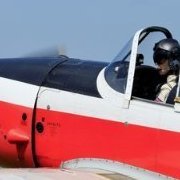
Spitfire F.21 Blackpool Air Pageant 1947
wellsprop posted a topic in Ready for Inspection - Aircraft
Been working on this for about a week... Converted from Airfix's XIX and F.22, sporting a very striking scheme which makes the "new wing" Spitfires look very nice! IMG_5807_zps69903331 by Ben Standen, on Flickr IMG_5806_zpsa0b7d909 by Ben Standen, on Flickr IMG_5805_zps999da7b3 by Ben Standen, on Flickr IMG_5803_zps0a25d766 by Ben Standen, on Flickr IMG_5802_zps0e9c332e by Ben Standen, on Flickr IMG_5801_zpsc1e5a256 by Ben Standen, on Flickr IMG_5799_zpsa699a006 by Ben Standen, on Flickr All comments welcome Regards, Ben.- 20 replies
-
- 13
-

-
Hello All, Back again with the sublime Eduard Spitfire in Micro scale: Happy to take comments, and thanks for looking.
-
Good evening. I have just bought the Airfix 1/24 Spitfire Vb. I quite fancy doing an alternative colour scheme, I have seen pictures of the restored BM597 in the sky/tan/green. Does anyone know where I could possibly get similar decals. I also I have really enjoyed using Tamiya spraycans recently, what colour is the correct one for RAF tan, is it AS15? Finally, am I correct in thinking that Tamiya doesn't do SKY in a spraycan? (I've seen various suggestions to use an IJN colour but could do with advice.) Any help appreciated. Mark,
-
Hi everyone, Just added three new 1/72 resin sets to the website, covering a Tornado GR.4 configured Litening III pod, Spitfire 90 gal slipper tank and X-4 missiles for the FW 190A. Each X-4 is made up of five parts plus pylon and is less than 2cm long, fiddly little things they certainly are to! Pictures are up on the website. Thanks! Colin
- 2 replies
-
- Tornado GR.4
- X-4 missile
-
(and 3 more)
Tagged with:
-
Has anyone seen the Brengun Spitfire floatplane and if so what is the base kit in the box as the airframe and the floats are in different plastic. Dek.
-
This is last model I finished. The aircraft modelled is the DW-O of the 610th RAF Squadron that operated from Biggin Hill in July 1940 during the Battle of Britain. It's my pride. For me, it's the best model I have build so far. The Tamiya kit is excellent with superb fit, great detail and very easy to build. It gave my no trouble at all. It was very relaxing and I enjoyed it very much. Here are some photos from the last stages of WIP with close ups. The exhausts are painted with a mix of Humbrol Metalcote Gun Metal, Metalcote Steel, Metallic Blue, Bronze and afterwards they were dry brushed with Metelcote Gun Metal και Rust. Here are the final photos. And some close-ups that I forgot to take while having the blue background... The model was awarded Bronze Medal at the 32nd IPMS Hellas Exhibition/Contest and I'm very proud of it!
- 22 replies
-
- 5
-

-
- Spitfire
- Supermarine
-
(and 2 more)
Tagged with:
-
Hi all, Well... I'm going to attempt to build LA232 in 1/72 scale using two Airfix kits; the XIX and F22. I have a few spares I'll use too. First to do is the contraprop. I'm not sure where to cut the usual spinner...
-
Hi folks decided on this old chestnut as a third build for this GB,Wheels up on the iconic stand supplied,the moment I opened the box and saw the blue plastic it took me right back to the seventies when i must have built dozens of them,sadly the decals were U/S so thanks to fellow member steven I have the recent boxings decals.
-
Howdy! A couple of recent builds. Started out with the Tamiya Mk. Vb with the intention of building "Johnnie" Johnson´s aircraft, or atleast a couple of them. "DW-B" is the one he flew during Operation Jubilee. The Eduard Mk. IXc is my first Eduard Spitfire and my first Eduard-kit - it is excellent but I made a couple of mistakes halfway in and decided not to use my precious "Johnnie-decals" on this one just yet.. I saved those for future builds with less mistakes. Will probablt try out a couple of those Brassin upgrades as well, now that I have the chance. Both are painted with Tamiya rattle-cans (which is evident where I have built up too much spray between the camo and have received a sharp line.. Brush-painted details with Humbrol-, Citadell and Vallejo acrylics. Master-barrels for the Vb and decals from Victory Models and Eduard. No weathering to speak of - yet, except the fuel-stains on "Johnnies" Vb.. Prince Emanuel Galitzine´s Mk. IXc I lost the navigational light on the bottom.. Think I can find it though. Same for the support on the undercarriage - lost one. Will have to find a replacement. The cockpit: "Johnnies" DW-B: Both aircraft together: Learnt a lot from the Eduard kit and will defiently build looaads more of both kits! Hopefully with fewer mistakes and better results every time. Love them and have so many ideas for decal-options, camouflage.options etc. Thanks for looking and any constructive criticism is more then welcome!
-
Just finished another build, it was quite a quick one, only 10 days start to finish. Its the AIRFIX 1/48 PRXIX After just completeing the ACADEMY Spitfire XIV I thought I had better see what a Spitfire was supposed to look like. For being such a new kit I was a little bit disappointed with some of the fit. Interiour detail is first class but the wing root fitting was awful. Its brush painted with Humbrol acrylics and been given a light weathering and aftermarket decals. One of the photos shows it next to the Academy kit and the differences are glaringly obvious. All comments welcome. Mark.


